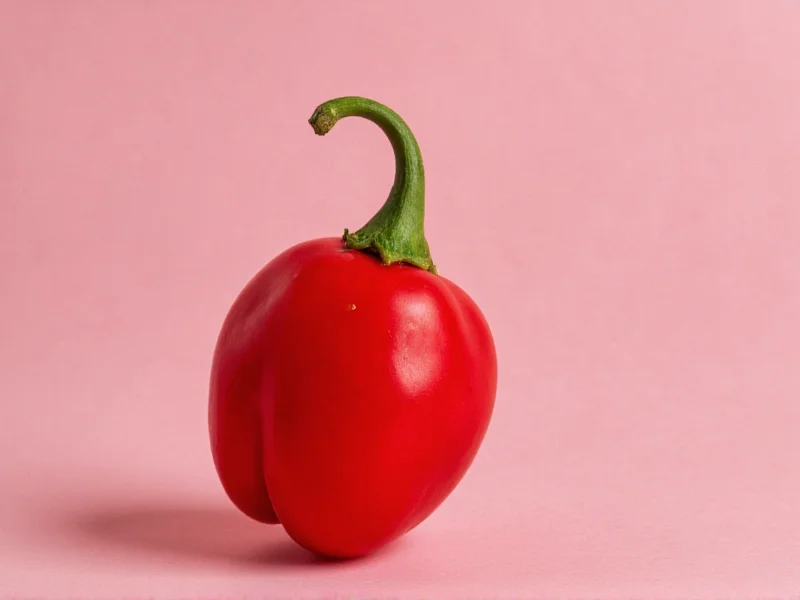Red chilies represent the final ripening stage of many chili pepper varieties, transforming from green to vibrant red as they mature on the plant. This color change signifies increased sugar development and flavor complexity while maintaining the capsaicin compounds that create their signature heat. The transition from green to red typically occurs over 2-4 weeks as the peppers reach full maturity.
Botanical Classification and Origins
Scientifically classified under the genus Capsicum in the nightshade family (Solanaceae), red chilies originate from the Americas where they've been cultivated for over 6,000 years. The five primary domesticated species include Capsicum annuum (most common bell peppers and chilies), C. frutescens (tabasco peppers), C. chinense (habaneros), C. pubescens (rocoto peppers), and C. baccatum (aji peppers). When these varieties reach full maturity, they typically develop red pigmentation due to increased carotenoid production.
Physical Characteristics of Red Chilies
Red chilies display remarkable diversity in appearance while sharing common characteristics:
- Color spectrum: Ranges from bright cherry red to deep burgundy depending on variety and growing conditions
- Size variation: From tiny 1-inch bird's eye chilies to large 8-inch cayenne varieties
- Shape diversity: Conical, elongated, wrinkled, or bell-shaped forms
- Surface texture: Smooth, glossy skin when fresh; develops wrinkles when dried
- Internal structure: Hollow interior containing white ribs and numerous flat, pale yellow seeds
| Common Red Chili Variety | Typical Length | Color at Maturity | Heat Level (SHU) |
|---|---|---|---|
| Cayenne | 4-8 inches | Bright red | 30,000-50,000 |
| Red Jalapeño (Chipotle when smoked) | 2-3 inches | Deep red | 2,500-8,000 |
| Red Serrano | 1.5-2.5 inches | Bright to dark red | 10,000-23,000 |
| Red Fresno | 2-3 inches | Vibrant red | 2,500-10,000 |
| Thai Bird's Eye | 1-2 inches | Bright red | 50,000-100,000 |
Understanding Red Chili Heat Levels
The heat in red chilies comes from capsaicinoids, primarily capsaicin, concentrated in the white pith and seeds. The Scoville Heat Unit (SHU) scale measures this pungency:
- Mild red chilies (0-5,000 SHU): Poblano peppers, when red (ancho), offer subtle warmth with rich, earthy flavors
- Medium heat (5,000-30,000 SHU): Red jalapeños and serranos provide noticeable heat with bright, grassy notes
- Hot (30,000-100,000 SHU): Cayenne and red tabasco peppers deliver intense, immediate heat
- Extreme heat (100,000+ SHU): Certain habanero varieties turn red when mature, offering fruity yet fiery experiences
Interestingly, the same chili variety often becomes slightly hotter when fully ripened to red compared to its green stage, as capsaicin concentration increases during maturation. However, the flavor profile also develops greater complexity with fruity, sweet, and smoky notes that balance the heat.
Nutritional Profile and Health Benefits
Red chilies offer impressive nutritional value beyond their culinary appeal. They're exceptionally rich in vitamin C (one red chili contains more vitamin C than an orange), vitamin A (from beta-carotene), and various B vitamins. The capsaicin responsible for their heat provides several documented health benefits:
- Metabolism boost: Capsaicin increases thermogenesis, potentially aiding weight management
- Pain relief: Topical capsaicin creams help reduce nerve pain and arthritis symptoms
- Cardiovascular support: Regular consumption may help lower blood pressure and improve circulation
- Antioxidant properties: Carotenoids and other compounds combat oxidative stress
- Anti-inflammatory effects: May help reduce chronic inflammation markers
Culinary Applications Across Global Cuisines
Chefs and home cooks worldwide utilize red chilies in diverse preparations. Fresh red chilies add vibrant color and complex heat to salsas, stir-fries, and curries. When dried, they develop deeper, smokier flavors perfect for spice blends, rubs, and sauces. The difference between red and green chili peppers significantly impacts their culinary applications—red varieties generally offer sweeter, more developed flavors compared to the brighter, grassier notes of green chilies.
In Mexican cuisine, dried red chilies like guajillo and ancho form the foundation of complex mole sauces. Indian cooking features red chilies both fresh and dried in curries and chutneys. Thai cuisine relies on small red bird's eye chilies for authentic heat in dishes like tom yum soup. Mediterranean cooking often uses sweet red peppers (mild varieties) in roasted pepper salads and sauces.
Red vs. Green Chilies: Understanding the Difference
The most common question among cooking enthusiasts concerns the difference between red and green chili peppers. The color difference primarily indicates ripeness rather than different plant varieties. Most chili peppers start green and gradually change color as they mature:
- Harvest timing: Green chilies are picked early in the ripening process; red chilies allowed to fully mature
- Flavor development: Red chilies develop higher sugar content (2-3x more) and complex flavor compounds
- Nutritional differences: Red chilies contain significantly more vitamin A and antioxidants
- Heat variation: Most varieties become slightly hotter when fully ripened to red
- Texture: Red chilies often have thinner walls and softer texture compared to crisp green varieties
Proper Storage and Preparation Techniques
To maximize shelf life and flavor, store fresh red chilies in the refrigerator's crisper drawer in a paper bag (not plastic) for up to 3 weeks. For longer preservation, freeze whole peppers on a baking sheet before transferring to freezer bags, or dry them using a food dehydrator or oven method. When handling extremely hot red chilies like habaneros or ghost peppers, wear gloves to prevent skin irritation from capsaicin oils.
For culinary preparation, remember that most of the heat resides in the white pith and seeds. Remove these elements for milder flavor, or include them for maximum heat. Roasting red chilies over an open flame enhances their natural sweetness and adds smoky complexity—particularly effective for larger varieties like poblanos and anaheims.











 浙公网安备
33010002000092号
浙公网安备
33010002000092号 浙B2-20120091-4
浙B2-20120091-4